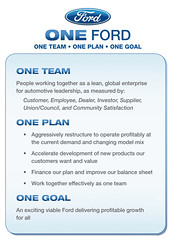
Buzzing off those results you secured for your company? Feeling confident? Maybe even a little self-important? Time to check yourself people.
Ever work with someone who always had all the answers, even if they weren’t paying any attention to the questions? Have you ever been that person? It’s human nature for success to breed confidence; however, allowing that confidence to veer into arrogance is a dangerous thing in business and marketing. It’s hard to build a team-first culture when key members of the team think they are above the rules and above the rest of the group. And when a whole team becomes arrogant, success gives way to complacency. Beware of these risks at every level of your business.
When confidence turns sour
It’s hard to overstate how important confidence is to success, and how easy it is for confidence to become arrogance. It can grow from little things. Maybe you contributed a big idea to the project but felt that you didn’t get enough credit. Or maybe you got too much credit. Perhaps you see the positive trajectory of the team you’re a part of and overstate your part in it. It’s OK to be proud of your work and to foster pride in teamwork, but when that morphs into feelings of superiority, your whole team can start assuming that past results guarantee future success.
“A confident, level-headed leader knows that arrogance is bad for business, and that times of success are when they need to temper confidence.
No matter where it originates, arrogance is bad for business. A confident, level-headed leader knows this, and knows that times of success are when they need to temper confidence. You want team members to feel they’ve contributed, but not that they are more valuable than the rest of the team. As a leader or a team member, you also need to check yourself constantly, to make sure you’re not sowing the seeds of over-confidence in your business and marketing.
It’s important to stay vigilant because arrogance can destroy a successful business or team from the inside. When one team member feels they’re more important than the rest and their attitude goes unchecked, suddenly the rest of the team may not be so willing to engage and share their own ideas. An arrogant team member is willing to sacrifice the good of the whole to continue to feel important.
It starts with you
Of course, this isn’t just a risk for teams. It’s also something that we all must address on a personal level. When you come up with a great idea, put in the work to bring it to reality, and see your idea lead to success for your business, of course you should be feeling confident! However, stay humble and don’t let complacency creep in or the damage can escalate. You feel the confidence of success, so maybe next time around you put in a little less effort and expect to get the same results. Then, what happens when that lesser effort doesn’t lead to the results you hoped? Well, it’s got to be someone else’s fault, right? Arrogance might tell you to look outside of yourself and place blame, when the real problem is much closer to home.
Practice self-reflection
The cure for arrogance is a willingness to look at your actions through a lens of humility. Honest self-evaluation can be hard, but it’s incredibly valuable. In good times and bad, it starts with asking: How can I do a better job? No matter how well you and your team are doing, there is always room for improvement. Just as importantly, no matter how well something has worked in the past, there’s no guarantee that it will continue to be the best thing for your business moving forward. The old saying that “pride goeth before the fall” is true! People who take a step back and reflect periodically, often find more ways to improve their performance than their self-important colleagues.
Beware the dangers of pride and arrogance in business. You never want to feel like you have ‘arrived’ – no matter how well things are going, how hard you worked to contribute to that success, and how much your team values your input. Confidence is a powerful, positive thing, but only when it’s tempered by a healthy dose of humility.


 You say you want to get closer to customers, but your actions are different than your words.
You say you want to get closer to customers, but your actions are different than your words. Join us for The Four Hats of The Social CMO webinar for a unique look at four roles emerging marketing leaders can embrace as they evolve to become Social CMOs!
Join us for The Four Hats of The Social CMO webinar for a unique look at four roles emerging marketing leaders can embrace as they evolve to become Social CMOs!
 Building something entirely new. Creating something fresh from something that existed. Evolving business to a new place. Changing a culture. True innovation. Standout success. Attaining influence or authority. Building a devoted following. Creating lasting relationships.
Building something entirely new. Creating something fresh from something that existed. Evolving business to a new place. Changing a culture. True innovation. Standout success. Attaining influence or authority. Building a devoted following. Creating lasting relationships..jpg)
 We often hear of social media being equated with tools and platforms. But it’s really much more than that.
We often hear of social media being equated with tools and platforms. But it’s really much more than that.